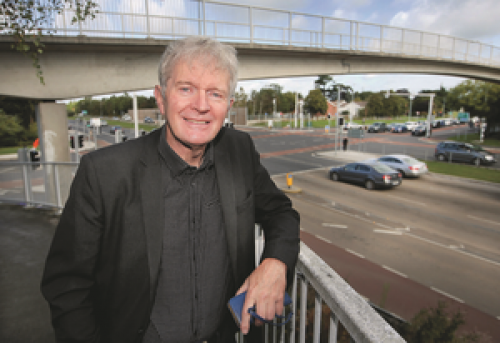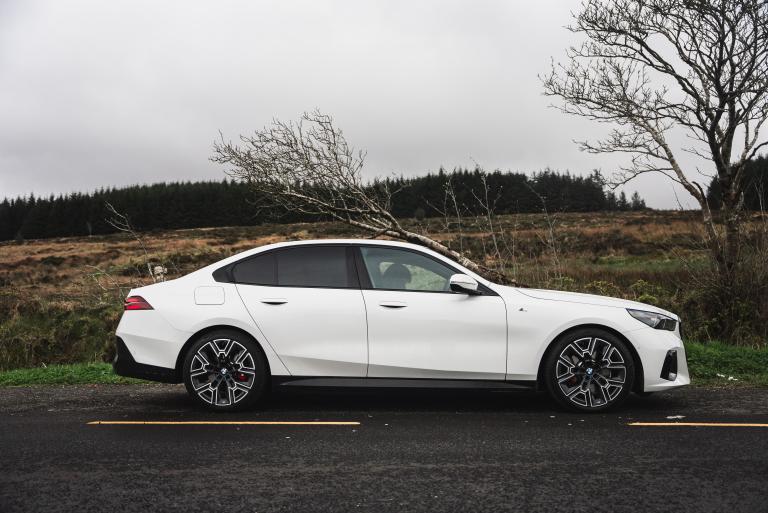Nissan on right track to win you over with electric Ariya
Overview
It’s surprising what you can learn about a car in half-an-hour. And that’s what I did (I hope) earlier this week – I drove a car that Nissan says will revolutionise the electric vehicle market here.
It’s called the Ariya and it’s due to go on sale next month. I got the half-hour in a special pre-production model to nip around Mondello Park.
So what can I tell you from 30 minutes of driving? A surprising amount, I hope you’ll agree, but first let me get a few cornerstones in place.
A starting price of €48,995 has been announced. Size and price put them up as key rivals to the likes of the award-winning Hyundai IONIQ5, KIA EV6, Volkswagen ID. 4 and Skoda ENYAQ.
Good mood, bad mood – why we should try to leave the blues behind us
This is a big crossover – one of the tallest – with plenty of room for rear-seat passengers, and there’s a well-proportioned boot, relatively shallow and long. So a family will have plenty of room.
Just to give you an idea of general size, it’s a good deal bigger than the Qashqai (but only marginally wider) and the room inside stems partly from the entirely flat floor. It was easy to get into the back, too, because the roofline is high. And there’s a great driving position.
I thought it looked particularly smart, with strong, sharp lines merging and counterbalancing curvy shapes. A cleverly designed ‘waist’ indent gives it a striking profile.
Head-on, it’s eye-catching, the rear less so, but the subtle side indentation makes it for me. Is it as good looking as the KIA EV6? It’s certainly as head-turning.
It’s made in Japan on a new Nissan/Renault/Mitsubishi Alliance platform and there are two battery options: a 63kWh version (which I drove) with a range of 402 kilometres and one with 87kWh, which has a claimed range of 519km. The maker says a quick charger will add 300km in half-an-hour.
There are two grade options with an impressive spread of safety, comfort and infotainment elements as standard.
A minimalist dashboard means there are no conventional buttons or switches, and the display interface comprises a 12.3-inch instrument monitor and 12.3-inch central display. That’s a lot of screen, but all useful.
The moveable central console is cleverly set up – except for the hard-to-see buttons on top of it for choosing which mode you want. It was difficult to see those buttons in bright sunshine, one of the few criticisms I had of the car. It might not seem like much, but I found it distracting.
I sampled it in several modes: Eco, Boost (regenerative), e-pedal (no need to use the brake, so you can accelerate and decelerate using only the accelerator), Sport and Standard.
I drove it briskly around the track, although I never had the tyres squealing, but it was interesting to record how different it felt in Boost mode.
Of course, most people might play around with modes for a while, but I think the majority will settle on standard and get on with enjoying the car.
Just in case they have a taste for a bit of dynamism, its weight distribution – having the battery pack under the middle of the car – helped in that area and provided good road-holding on our drives. And it can shift a bit – 0-100kmh in 7.6 seconds is decent for such a large car.
Apparently there’s a lot of interest, and the makers expect 1,500 people to buy one in a full year with production restrictions lifted and more than that in the years ahead.
First models are all front-wheel-drive, but there will be an all-wheel-drive version later next year.
Now, it would be wrong of me not to point out the brevity of the acquaintance and acknowledge that a car – any car – critique demands far longer to assess.
So I’m not going to jump to conclusions or make sweeping statements as I would probably have to add or retract some conclusion or other.
But I will say this: It’s possible to get a sense of what a car is about in quite a short time.
It has been said, by older and wiser reviewers than your humble servant, that the first 100 metres frontload impressions that tend to stick for the rest of the test.
There are, however, elements I would want to explore further in everyday usage, such as those hard-to-see little buttons, actual battery consumption under a variety of conditions, how it felt on normal, rougher roads and so on. But I do have to say it has all the hallmarks of an EV that’s going to make a real impression.
There’s a growing market out there for cars like this – just look at how well the four rivals I mentioned are doing. There’s every reason to expect the Ariya will make a big impact too.
Good mood, bad mood – why we should try to leave the blues behind us



